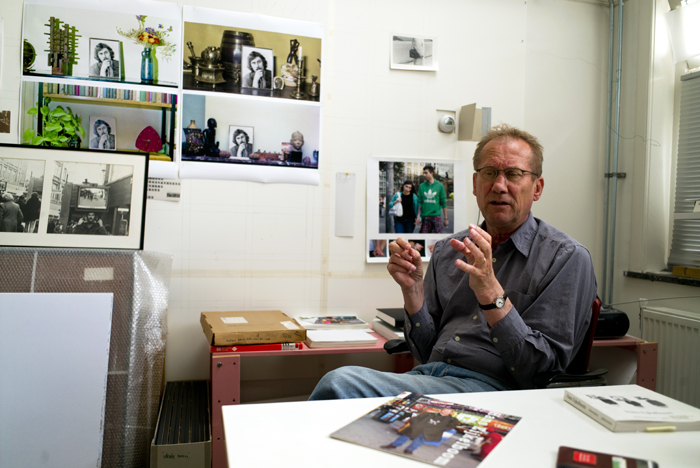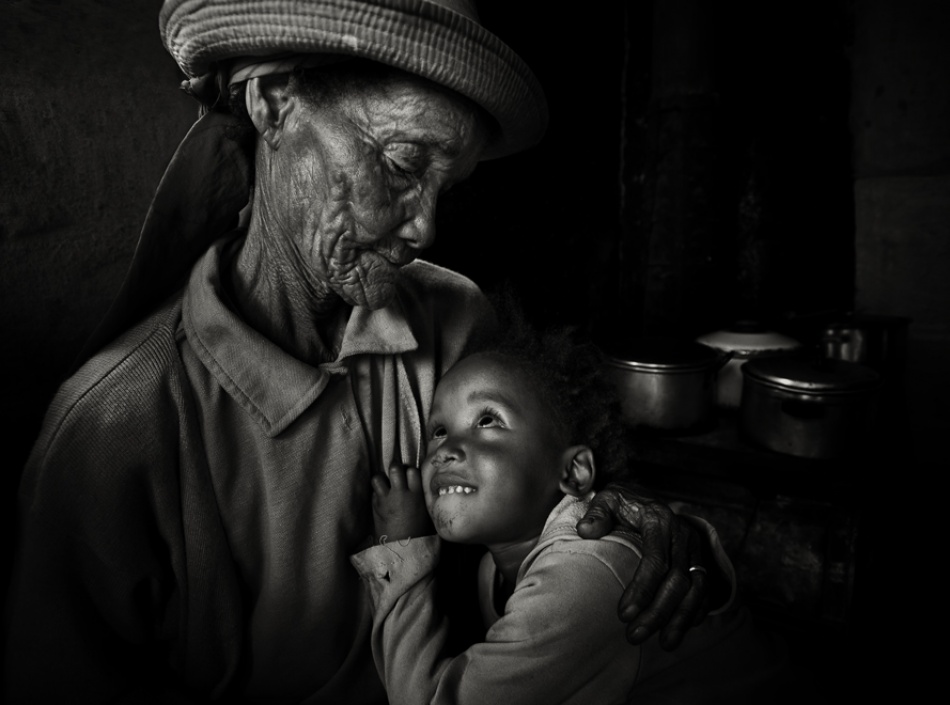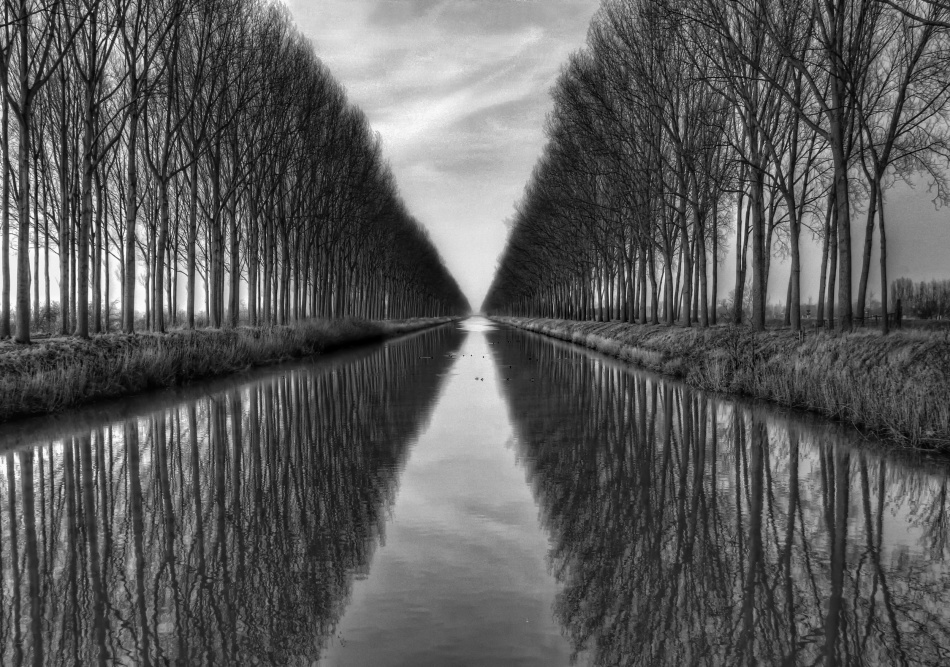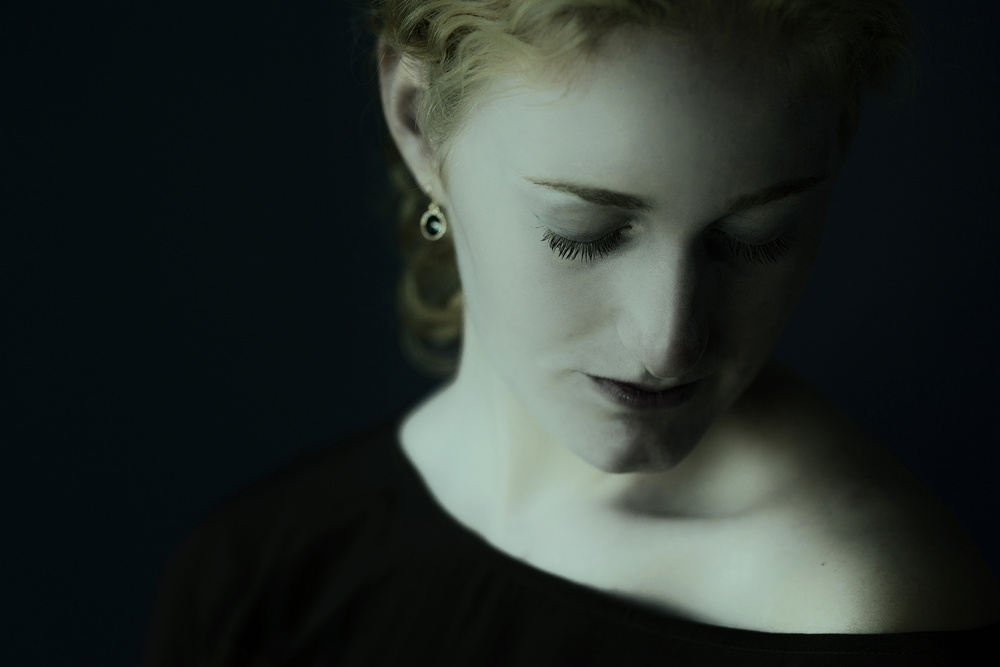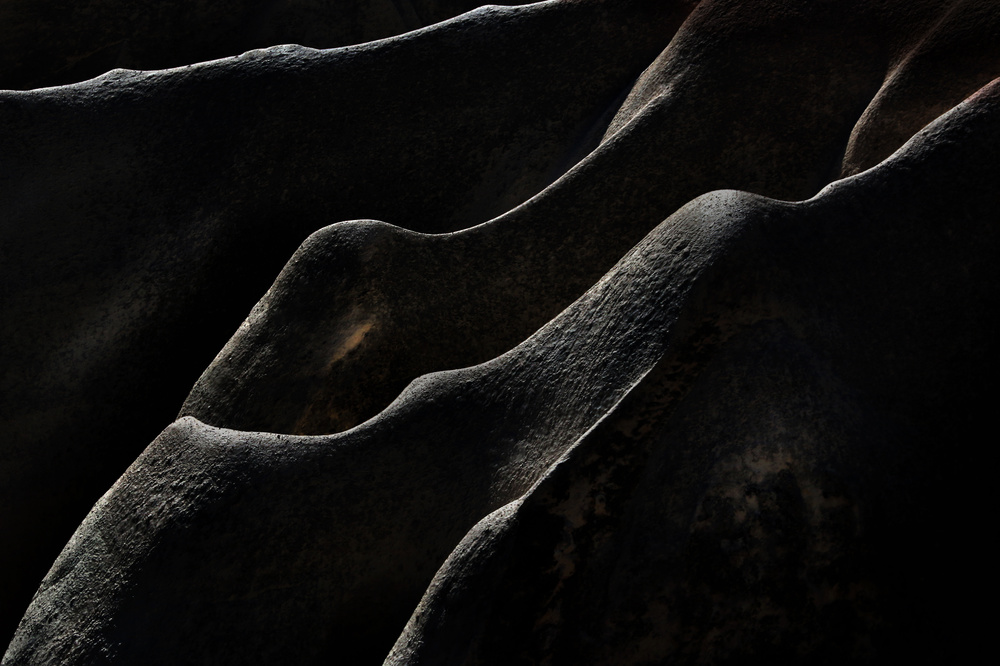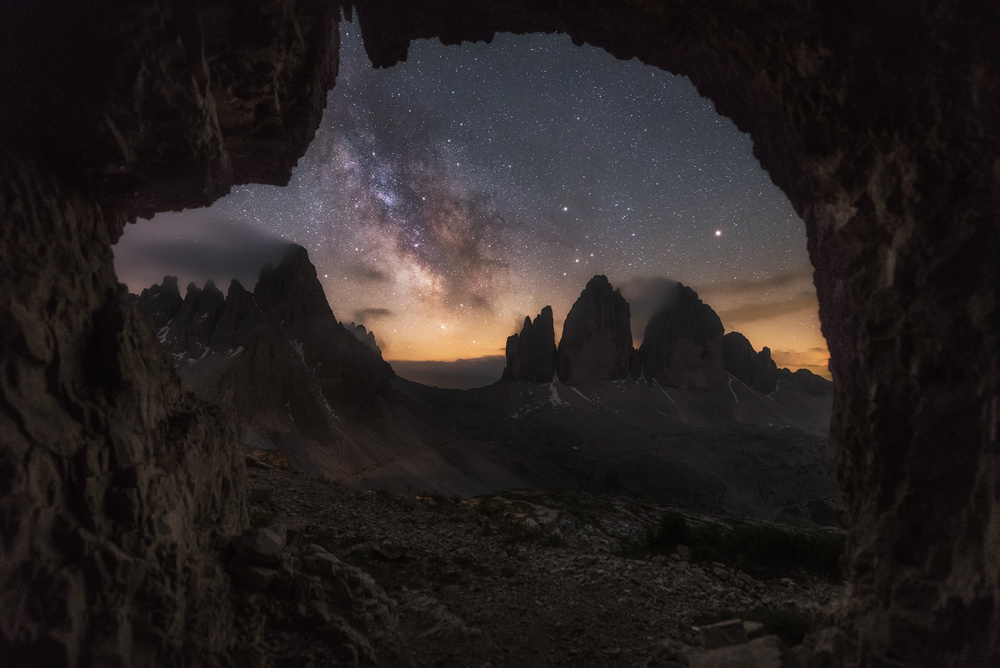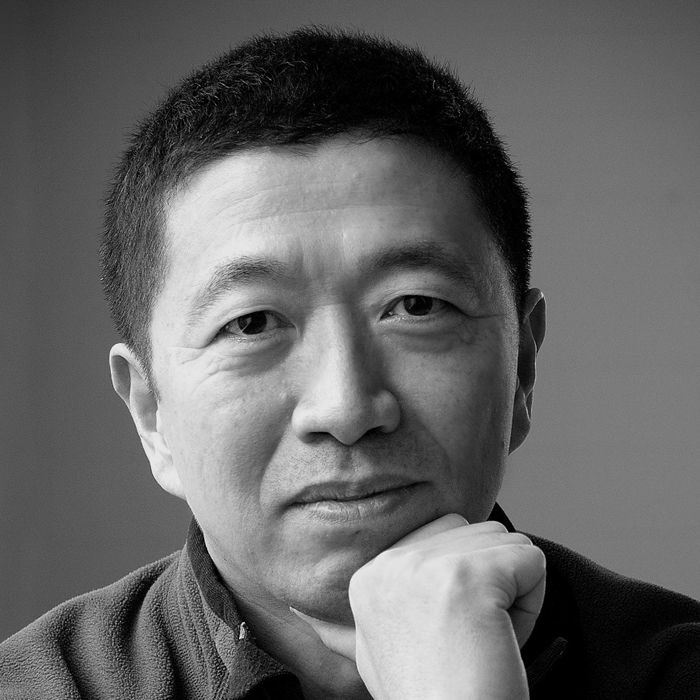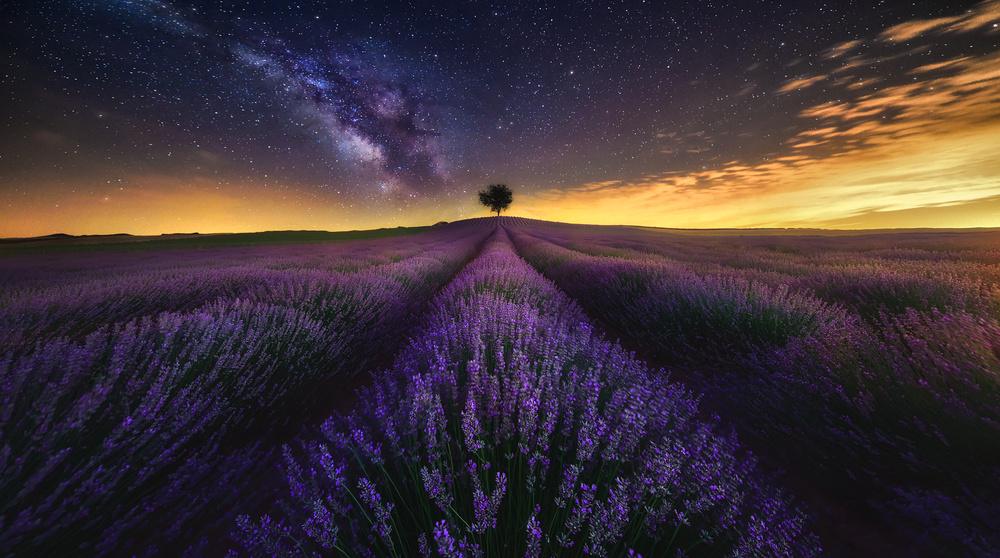Photographers
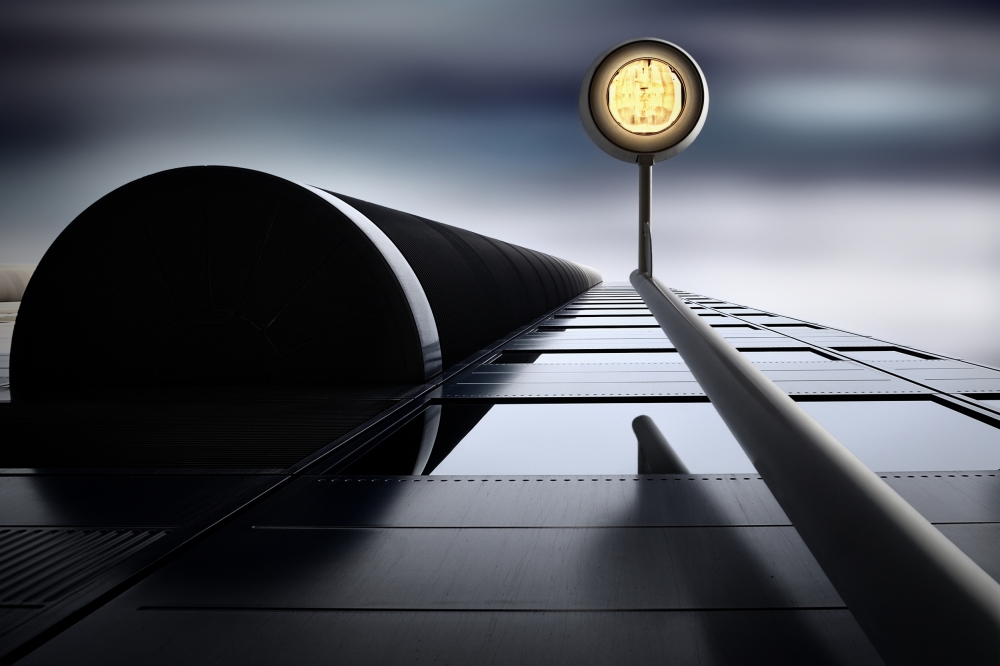
A Hopeful Light
1x Blog-Photographers' .
The sky was cloudy and there was cool light illuminating the rubber duct cover and the fluorocarbon coated walls. I expected some interesting results created by the contrast between the duct cover and the walls, and I took several photos with these features as the prime elements of my composition. I had no alternative but to use my 28–75mm standard zoom lens set to 28 mm as I had left my wide-angle lens at home.
I reviewed the images on my camera's LCD and was a little disappointed. Then I noticed a circular street lamp next to the duct cover. I recomposed to include the lamp and started shooting again. This time I made sure that the semicircular shape of the duct cover and the line of the street lamp were in symmetry. I used a small aperture to ensure that all elements were in focus, which only gave me a depth of about 12 inches (30 cm) to play with. I was about to move along when the lamp suddenly turned on. I took some more shots from the same position as before, but now with the lit lamp. I was very fortunate. If I had left a few minutes earlier, I would not have had the benefit of the glowing street lamp in my composition.
I feel honored that this image was published on 1x. I am also pleased that the various techniques I used were efficiently blended together — the frequent adjusting of the camera settings, the light turning on and the tones of the structure and the sky. I would like to re-use this technique, and I hope that it will open the door to more interesting architectural images.
. '
Just as I was about to leave after capturing some good shots, the lamp in my composition suddenly switched on. As an Architectural Engineer living in Tokyo, I sometimes walk around town to take pictures of the city's modern architecture — particularly where the high-rise buildings are crammed together side by side. On this particular day, I ignored the areas of Tokyo's famous buildings and was looking for buildings with character. I came upon this building that had a black semicircular rubber duct cover and steel walls.
The sky was cloudy and there was cool light illuminating the rubber duct cover and the fluorocarbon coated walls. I expected some interesting results created by the contrast between the duct cover and the walls, and I took several photos with these features as the prime elements of my composition. I had no alternative but to use my 28–75mm standard zoom lens set to 28 mm as I had left my wide-angle lens at home.
"I was very fortunate. If I had left a few minutes earlier, I would not have had the benefit of the glowing street lamp in my composition."
I reviewed the images on my camera's LCD and was a little disappointed. Then I noticed a circular street lamp next to the duct cover. I recomposed to include the lamp and started shooting again. This time I made sure that the semicircular shape of the duct cover and the line of the street lamp were in symmetry. I used a small aperture to ensure that all elements were in focus, which only gave me a depth of about 12 inches (30 cm) to play with. I was about to move along when the lamp suddenly turned on. I took some more shots from the same position as before, but now with the lit lamp. I was very fortunate. If I had left a few minutes earlier, I would not have had the benefit of the glowing street lamp in my composition.
I feel honored that this image was published on 1x. I am also pleased that the various techniques I used were efficiently blended together — the frequent adjusting of the camera settings, the light turning on and the tones of the structure and the sky. I would like to re-use this technique, and I hope that it will open the door to more interesting architectural images.
POST PROCESSING
I believe that the post-processing is as important as taking the picture. In my architectural images I pay particular attention to the light source, the contrast between the structural elements of the building and the tonal range between the building and the background. I used Nikon Capture NX 2.0 and Photoshop Elements 9.0.
1) I wanted to emphasize the textures of the black duct cover, the smooth glossy steel wall and the street lamp. I therefore applied different contrast and gradients to each structural element.
2) For the duct cover, medium and small pixel contrast was increased to enhnce the texture of the rubber.
3) For the steel wall, medium and small pixel contrast was decreased to obtain a smooth texture.
4) For the lamp, especially around the bulb and reflected plate, medium and small pixel contrast was increased to describe the structural details.
5) The sky was created by using a combination of Motion Blur and Gaussian Blur filters. The location of the clouds and direction of light had to be carefully considered. I spent five days just adjusting the sky!
6) The final step was intricate processing of the colors. I often leave small amounts of color to render the texture of structural materials and sky. I applied a Black and White adjustment layer and changed the Opacity around those areas where I wanted elements of color to appear, such as on the lamp.
1) I wanted to emphasize the textures of the black duct cover, the smooth glossy steel wall and the street lamp. I therefore applied different contrast and gradients to each structural element.
2) For the duct cover, medium and small pixel contrast was increased to enhnce the texture of the rubber.
3) For the steel wall, medium and small pixel contrast was decreased to obtain a smooth texture.
4) For the lamp, especially around the bulb and reflected plate, medium and small pixel contrast was increased to describe the structural details.
5) The sky was created by using a combination of Motion Blur and Gaussian Blur filters. The location of the clouds and direction of light had to be carefully considered. I spent five days just adjusting the sky!
6) The final step was intricate processing of the colors. I often leave small amounts of color to render the texture of structural materials and sky. I applied a Black and White adjustment layer and changed the Opacity around those areas where I wanted elements of color to appear, such as on the lamp.
TIPS
1) Ensure that all elements of the composition work together and that you are clear about how you want the final outcome to appear.
2) Pay particular attention to lighting, focus and depth of field.
3) Post-processing should concentrate on achieving your desired result.
2) Pay particular attention to lighting, focus and depth of field.
3) Post-processing should concentrate on achieving your desired result.
BIOGRAPHY
As an International Bridge Engineer I have been fortunate enough to visit many places around the world for various large architectural and bridge structure projects. My interest in photography started by taking photographs of the bridges and buildings that I designed. I then saw some wonderfully artistic architectural photographs and have been passionately interested in this genre ever since. My goal is rooted in both the logic of structural mechanics and material engineering, as well as the finer artistic elements that make a building and its photograph successful.

